
|
Introducing ATREE’s new Director
Dr. Balachander, or Bala, to friends and
colleagues, is not new to ATREE. Bala has been
Governing Board member, trustee and donor at
various times in ATREE’s history, and the role of
Director, ATREE, is the latest hat donned.
Earlier, he was the Ford Foundation’s South
Asia Representative for about six years until
late 2008. In 2010, he was appointed as a
Director of the founding Consortium Board
of the Consultative Group on International
Agricultural Research (CGIAR) overseeing
reform across the 15 centers in the CG system.
He also serves as the Chair of its Science,
Programmes and Partnership Task Group.
|
This quarter, ATREE released two publications that talk to
audiences outside academia and scientific research-a discussion
paper series and a coffee table book.
The first Environment and Development Discussion Paper is a
situation analysis on issues of water management in the Arkavathy
river basin, which abuts the north part of Bengaluru. The series,
on issues at the interface of environment and development,
will present insights and information, in accessible language,
to decision makers, experts, civil society groups and the wider
public. Topics will relate to forests, water, energy and pollution,
and questions of livelihoods and environmental governance
associated with these sectors.
Himalaya: Mountains of Life is a coffee table book on the
threatened biodiversity and cultures of the eastern Himalayas.
The images, interspersed with little known narratives of the land,
its people, and flora and fauna, try to persuade the reader of the
importance of conserving this region. This book, by conservation
biologist and ATREE President, Kamal Bawa and photographer,
Sandesh Kadur, is a sequel to Sahyadris: India’s Western Ghats.
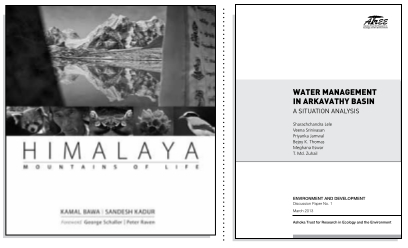
Download Water management in Arkavathy basin: A situation
analysis and forthcoming in this series from http://www.atree.
org/discussion_papers.
To purchase Himalaya: Mountains of Life, or for information
on the book, visit http://www.himalayabook.com/.
|
|
Dr Balachander has been Director for
Asia Programs at the Mountain Institute
in Washington, D. C. and for a decade
from the early 90s he worked for a
variety of organizations concerned
with community-based environmental
management and development
in Asia and North America. He
has also served as Director of the
Biodiversity Conservation Network,
a USAID-funded programme for
promoting conservation of vulnerable
ecosystems in Asia. Besides being a
keen mountaineer and naturalist who
has hiked in many remote parts of the
world, Bala is an avid tennis and cricket player.
Research
Putting grasslands on the conservation map
Grasslands hardly feature on the
conservation agenda in India. They
may be home to endangered species
like the great Indian bustard, lesser
florican, Indian wolf and blackbuck,
but are termed ‘wasteland’, taken for
granted and put touse for exotic tree
plantations, irrigated agriculture and
industrialization.
To highlight the role of grasslands as
important ecosystems with valuable
flora and fauna, and their role in
livelihoods of local and nomadic
pastoralists, ATREE is hosting a two-year
project to produce country-wide
maps of dry grassland biomes, using
available satellite imagery. This is
expected to serve as a starting point to
conservation prioritization and action.
Abi Tamim Vanak and his team focused
on four states—Andhra Pradesh,
Karnataka, Madhya Pradesh and
Maharashtra. Over a period of eight
months, the team used unsupervised
|
classification of coarse (250m) and fine
(30m) resolution satellite imageries to
create a map of grassland areas. They
then plotted ground control points
of land cover types ranging from
grasslands, scrub, plantations, fallow,
cropland, bare rock, and bare soil and
used this data to refine the initial
classification and create high accuracy
maps of land cover type. The team also
charted grassland-associated species
through tracking carnivore scat,
track impressions, herbivore pellets,
opportunistic sightings and local
information. In the next phase of the
project, species-presence data from
field surveys and camera-traps will be
used to create occupancy maps across
the four states and will be combined
with land cover maps and threat maps
to derive a conservation prioritization
ranking using a conservation planning
software called Zonation. Based
on the rankings obtained from the
software, high priority grasslands
will be highlighted for conservation
planning in an inclusive adaptive
management framework. The team
will share the results of these analyses
and conservation prioritization
ranking on online databases such as
India Biodiversity Portal, with high
resolution, district level maps.
Team: Dr. Abi Tamim Vanak, Ameya Gode,
Abhijeet Kulkarni and Chintan Sheth
Funder: MoEF National Environment
Sciences Fellowship
Tourism in a Protected Area:
Building bigger stakes for the
environment
Should Protected Areas be opened to
the demands of tourism? Scientists
find that unconditional access does not
pay: tourists may enjoy the opportunity
of a getaway, but do not appreciate it
enough to not litter, vandalise, or play
loud music.
|
Kalakad Mundanthurai Tiger Reserve
(KMTR) is one of the tiger reserves
whose boundaries will be relaxed to
accommodate tourism, following a
recent interim order by the Supreme
Court of India in this regard. The
Protected Areas that will follow this
directive are supposed to do so within
the framework of the guidelines
set by National Tiger Conservation
Authority (NTCA). In KMTR, the Field
Director has, in addition, set up a Local
Advisory Committee (LAC) to guide
implementation, and invited ATREE to
serve on the committee as the local
ecology and conservation expert
(ATREE’s Agasthyamalai Community-based
Conservation Centre is close to
KMTR).
NTCA expectation is that tourism
will help enhance livelihoods of
forest dependents and possibly
increase stakes towards biodiversity
conservation for forest users and
tourists. The opening up of the
peripheral areas of KMTR at the
recommendation of the LAC has started
a flow of tourists. Public representation
has also wrangled permission to boat in
the Karayar dam reservoir, and tourist
access to the area above Manimuthar
falls, areas not originally included by
the LAC.
However, high tourist traffic has meant
high vehicular flow. Possibility of forest
fires is higher, and there is not enough
staff to manage these numbers of
tourists. The net learning is that access
should be conditional on efforts
against littering, noise and vandalism.
To make the KMTR model a success,
tourists would need to be sensitised
to respect the surroundings, so that
tourist footfall has minimal impact on
the forests and animals.

|
Outreach
Conserving an endangered bird in Assam
ATREE Eastern Himalayas/Guwahati
has initiated implementation of a
new action outreach project titled
Conserving the Critically Endangered
white-bellied heron, Ardea insignis, in
key sites of the Manas Tiger Reserve in
Assam, India. The project is supported
by the IUCN-SOS (Save Our Species)
fund for the period December 2012 to
June 2014.
The white-bellied heron is a critically
endangered species with an estimated
global population of less than 250
mature individuals. It is listed among
the fifty rarest birds in the world.
At 1.27m in height, it is the world’s
second largest heron, exceeded
only by the Goliath Heron. It is
threatened by habitat degradation and
disturbance in the few areas where it
is still known to exist. The project will
address these threats by working with
local communities, civil society and
government to conserve and minimize
disturbance at three key sites along
the Assam-Bhutan border to enable
species recovery.
Conserving the white-bellied heron and
its habitat will also result in conservation
of several other species of plants and
animals in the forest patches where
they roost and breed, and in the river
courses, which are an important source
of water. It is therefore an important
indicator species.
Niraj Kakati, ATREE Guwahati
Biodiversity on the World Wide Web
A two-day Indo-US workshop on
biodiversity informatics was held
at ATREE to survey current state-of-
the-art biodiversity initiatives in
|
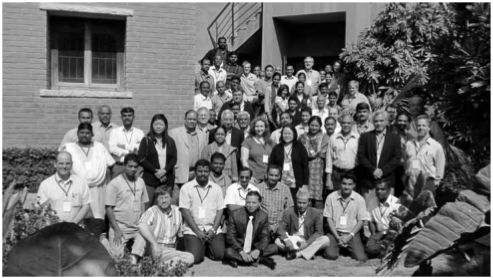 |
|
India and the United States; propose
better standards for convergence
and exchange of information among
diverse biodiversity portals; promote
integration of other geospatial data
with species pages; and facilitate
increased citizen motivation
and involvement in biodiversity
informatics. Data generators, curators,
technology providers, from across
government, academic and citizen
science initiatives, from India, US,
Bhutan, Sri Lanka, Nepal and France
addressed issues of collaboration,
technology, compatibility across
portals or platforms, reliability of
crowd-sourced data, and policies that
allow such sharing across institutional
and state boundaries.
Scientists agreed that without
collaboration and generous exchange
of information across countries,
portals, institutions and individuals,
a reliable, comprehensive portal on
biodiversity would remain a pipe
dream. Dr Cynthia Parr, Director,
Encyclopedia of Life, emphasized
the need to publish information that
already exists in databases across
the world. The Botanical Survey of
India and Zoological Survey of India,
represented by their Directors, spoke
about plans to digitize their repository
of images, illustrations, literature and
specimen lists.
|
Discussions on initiatives like
SeasonWatch and MigrantWatch
in India, eBird, mapoflife, eFlora,
Environment Information System
(ENVIS), India Biodiversity Portal
(IBP), and the Karnataka Biodiversity
Atlas threw light on what might work
in the creation and sharing of vast
biodiversity databases. Steve Kelling,
of the Cornell Lab of Ornithology eBird
initiative, showed how accommodating
user needs led to greater participation
in citizen science initiatives, and how
significant volumes of unreviewed data
from citizen science might be subjected
to crowd-sourcing corrections to arrive
at reliable inferences. Dr Prabhakar, of
Strand Life Sciences and lead for the
India Biodiversity Portal (IBP) project,
spoke about developing technologies
to serve data according to user needs in
order to fuel and sustain participation,
and generate better information.
This workshop was organized by
ATREE, in collaboration with India IBP,
Encyclopedia of Life, the Western
Ghats Portal and Strand Life Sciences.
The sponsors were Indo-US Science
and Technology Forum and Sir Dorabji
Tata and Allied Trusts. It was held at
ATREE’s Bengaluru office on 19-20
January 2013.
|
Learning from other stakeholders :
Meet on Ramsar wetlands
One hundred and thirty two delegates,
scientists and government officials
met for a first-time discussion on
management and issues concerning
Ramsar wetlands across India. This, the
National Ramsar Sites Stakeholders
Meet and Wetland Conservation
Seminar, in Allapuzha, was the first
stakeholder conference and it was
represented by a cross-section
of participants: from farmers and
fishermen, to environmentalists,
naturalists, researchers, scientists,
teachers, politicians, staff from
government and non government
organizations from across the country.
The aim of this seminar was to share
conservation models and learning
that could be replicated. Conservation
models that caught the imagination
of stakeholders ranged from breeding
season bans; ideas on managing
invasive species – water hyacinth,
Lantana and Phragmites; grazing-free
reserves and community fish
sanctuaries.
Conservation initiatives specific for
each Ramsar site were also discussed.
In Chilika Lake these ranged from
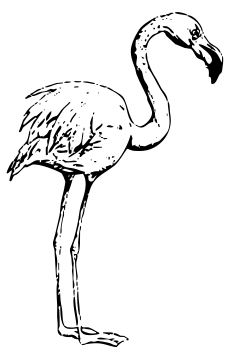
|
hydrological interventions for auto
recruitment of juvenile fish from sea;
free migration – opening of a new
mouth, dredging of Magarmukh and
Balugaon channels and renovation of
Palur canal. In the Harike Lake area,
organic farming was encouraged to
reduce the pesticide load and so
prevent water pollution. In Keoladeo
National Park and Vembanad-Kol
Wetland, plastic removal and cleaning
campaigns by stakeholders. In Kanjli,
water hyacinth and siltation removal
by local community. Digging of creek,
bund formation and turtle protection
camps in Point Calimere Wildlife
and Bird Sanctuary. Narratives of
soil conservation and water quality
monitoring by planting trees in Ropar
and Chandertal Wetland. Moisture
retention work (artificial glacier,
pasture development (Tregonella
cultivation) in Chandertal Wetland.
Home stays and eco-certification
meeting in Tsomoriri. And ATREE’s
own Student’s Wetland Congress and
Jalapaadam Club as successful wetland
awareness programmes of Vembanad-
Kol Wetland.
The event was supported by the
Ministry of Environment and Forests.
WWF India, Department of Environment
and Climate Change, Govt. of Kerala
and Department of Ports, Govt. of
Kerala were event partners. The meet
was held at Alappuzha, Vembanad Kol
wetlands, the largest Ramsar site in
India, 3-5 March 2013.
Jojo T. D., Vembanad
Waterfowl census 2013
Preliminary results of ATREE’s annual
mid-winter waterfowl survey in
the wetlands of Tirunelveli and
Thoothukudi districts recorded the
presence of more than 58,000 birds
belonging to about 60 species. The
tanks of Kadambakulam, Perungulam
and Armugamangalam recorded the
presence of over 11000, 6000 and
|
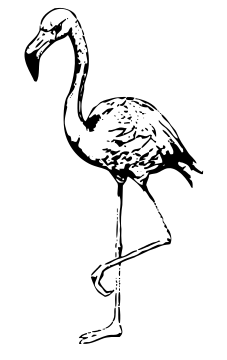
5000 water birds, respectively. Greater
Flamingoes, which mostly breed in
Kutch, Gujarat were seen in flocks of
hundreds in Karungulam, Perungulam
and Kadambakulam for the first time
in three years. Migratory bar-headed
geese that come from Mongolia and
other places in central Asia were
seen in flocks of hundreds or more
in two tanks. Migratory and resident
duck flocks numbering more than one
thousand were recorded in four large
tanks in the Thoothukudi district.
Waterfowl numbers from about 40
wetlands survey sites revealed an
increase of about 9000 birds from the
preceding two annual surveys. One
observation was that depleted water
levels due to scanty rainfall have made
the tanks very shallow and provided
suitable habitats for large flocks of
birds that feed in shallow waters. On
the other hand, deep water birds like
pochards were absent this year, and
diving birds like cormorants were
fewer in numbers.
This volunteer-based survey was led
by ATREE’s Agasthyamalai Community-based
Conservation Centre, with the
Pearl City Nature Society, from 26-28
January 2013. Fifty one participants –
students, teachers, nature enthusiasts
and birdwatchers – carried out the
|
 |
|
survey in 63 wetlands of the two
districts.
The concluding session was
held at Thoothukudi, chaired by
Mr. Shenbagamoorthy, IFS, District
Forest Officer, Thoothukudi district.
M. B. Prashanth and M. Mathivanan,
Agasthyamalai CCC
CEPF updates
The Critical Ecosystem Partnership
Fund (CEPF) is one of the largest
conservation investments in the
Western Ghats hotspot, with ATREE as
its regional implementation partner.
This five year programme extended
its term by another two years in 2012.
ATREE closed the fourth round of
proposals in December 2012 with
95 applications. Of these, 16 small
grants and 15 large grants have been
selected by a decision making panel
consisting of CEPF, ATREE Regional
Implementation Team and four
external invited expert members. The
reviews were carried out from 18-22
February 2013.
Other activities of the RIT: Dr. R.
Ganesan, Dr. Jagdish Krishnaswamy
and Dr Bhaskar Acharya represented
the CEPF-ATREE Western Ghats
Programme at a wrap-up workshop
at Pune on ‘Policy for conservation
and management of rocky plateau
biodiversity’ hosted by a CEPF grantee,
Biome Conservation Foundation on
2nd Feb 2013.
|
Bhaskar Acharya, Coordinator, CEPFATREE
Western Ghats Programme
participated in a strategizing stakeholder
workshop at Thiruvananthapuram on
Gap analysis of Periyar-Agasthyamalai
landscape for arboreal mammal
conservation, hosted by CEPF-ATREE
small grantee FERAL (Principal
Investigator: Dr H. S. Sushma) on 25 Mar
2013.
Education
Wipro and ATREE partnership
with youth

This year’s Khoshoo-earthian trophy
went to two schools and one college
for their practical action plans on
waste management. KK English High
School, Bengaluru; Sakar English
School, Ahmedabad; and Rajalakshmi
Engineering College, Chennai received
the award at a ceremony held on
16 February 2013 at the JN Tata
Auditorium, Indian Institute of Science
campus.
Besides presenting the Khoshoo-earthian
trophy for the most
actionable entry, ATREE’s role is that
of a knowledge partner that takes the
earthian award beyond the awards
ceremony into a more informed
|
grounding in ideas of ‘sustainablity’.
For this, Wipro has started a three year
Continuous Engagement Programme
(CEP), with the schools and colleges
shortlisted for the earthian award.
The first orientation programme was
held from 23-25 Feburary 2012, with
eleven teachers from four earthian
awardee schools of 2012. The theme
was Forests, Culture and Us. Ideas of
sustainability and resource use were
discussed through contextualized field-based
activities in three contrasting
landscapes: a biodiversity-rich tiger
reserve (BR Hills), a used protected
forest surrounding a temple town (MM
Hills), and a peri-urban agriculture-forest
mix (Kanakapura). These are also
sites of ATREE’s Community-based
Conservation Centres (CCCs).
Sightings of wildlife in the wilderness,
conversations with tribals, visits to
livelihood-enhancing lantana crafts
centres, meals featuring local wild
plants, set the platform for related
narratives: on the role of birds in
pollination; wild edible plants and
sustenance and nutrition of forest
dwelling peoples; Forest Rights
Act, roles of the Ministries of Tribal
Affairs and Environment and Forests;
circumstances of tribal migration;
lantana’s role as an invasive weed as
well as raw material for alternative
livelihoods.
Sutapa Mukherjee and Sharada
Ramadass, ATREE-earthian outreach
partnership
|
Interdisciplinarity discussion
series update
The students-organized, Towards
Interdisciplinarity@ATREE Discussion
Series:
Ms. Zainab Bawa, doctoral candidate
at the Centre for Study of Culture and
Society (CSCS), Bengaluru, highlighted
the contestations arising from the
ambiguity of property regimes in
the process of rehabilitation of
people, especially slum-dwellers and
tenant traders, displaced by urban
development projects. January 2013.
Ms. Arpitha Kodiveri, environmental
lawyer at the non-profit organization
Natural Justice, presented her
experience of community mobilization
under the Forest Rights Act, 2006 in
the Sariska Tiger Reserve, Rajasthan,
showing how the provisions of the law
unwittingly entrench and accelerate
the construction of a specific
community self-identity. March 2013.
Dr. Nilotpal Kumar, Assistant Professor
at Azim Premji University (APU), talked
about the cultural complexity of farmers’
suicides based on fieldwork carried
out in Anantapur District in Andhra
Pradesh, as part of his PhD research at
the London School of Economics and
Political Science. March 2013.
R. Venkat Ramanujam and Amit John
Kurien, PhD scholars, ATREE

|
New
Doctorates awarded
Doctoral degree awarded to 2007
batch students, Savitha Swamy and
Chethana H. C.
Savitha Swamy’s thesis was on
Reshaping neighbourhood parks for
biodiversity and people: A study on
pocket green spaces in Bengaluru,
India.
Chethana’s dissertation topic:
Assessing the ecological processes in
abandoned tea plantations and their
implication for ecological restoration
in the Western Ghats, India.
Recognitions
Third place in the 2013 ERDAS Award
for Best Scientific Paper in Remote
Sensing from ASPRS (Amercian Society
of Photogrammetry and Remote
Sensing) for paper co-authored by
Sharad Lele and Shrinivas Badiger
with student and her advisors from
McGill. See the paper on our website—
http://www.atree.org/articles:
Heller, E., J. M. Rhemtulla, S. Lele,
M. Kalacska, S. Badiger, R. Sengupta
and N. Ramankutty. 2012. Mapping
crop types, irrigated areas, and
cropping intensities in heterogeneous
landscapes of Southern India
using multi-temporal medium-resolution
imagery: Implications for
assessing water use in agriculture.
Photogrammetric Engineering and
Remote Sensing 78(8): 815–827.
More information on the award at
http://www.asprs.org/Awards-and-
Scholarships/Erdas-Award-for-Best-
Scientific-Paper-in-Remote-Sensing.
html
|
Visiting lectureship
Lele, Sharachchandra. Andrew Mellon
Foundation Visiting Lectureship.
Department of Environmental Science,
Allegheny College, Pennsylvania, USA.
1 week in January 2013.
People
Research staff
Ashwini S., JRF, Bangalore Genetics lab
Cynthia Sinclair, Project Assistant, CEPF,
Bengaluru
Deepa Chandran, Consultant, Bengaluru
on Karnataka Biodiversity Atlas
Divya Gopal, Consultant, Bengaluru
Dr. Joby Paul, Research Associate
Shibu Bhaskar, Programe Assistant;
Vembanad, and Binukumar, Project
Officer, Vembanad Kuttanad Package
Giridhar Malla, Consultant, Bengaluru
Dr. H. C. Chethana, Consultant, Bengaluru
Iswargowda Patil, SRA, Bengaluru
Dr. Pennan Chinnasamy, Dr Swati
Sulagna and Dr. Sanjeev Kenchaigol, and
Jyothi Hathenbelgal joined the IDRC,
Bangalore team as post doc, SRAs and
water quality lab analyst respectively.
Susan Varughese, Project Coordinator,
Bengaluru
Administrative
Rajeswari R., receptionist, Bengaluru
Yellappa, driver, Bengaluru
Interns
Moumita Laha
Kavya Krishna
|
|
Publications
Krishnamurthy, J., M. Bonell,
B. Venkatesh, B. K. Purandara, S. Lele,
M. C. Kiran, V. Reddy, S. Badiger, K. N.
Rakesh. 2012. The rain–runoff response
of tropical humid forest ecosystems to
use and reforestation in the Western
Ghats of India. Journal of Hydrology
472-473: 216–237
Popular press
ACCUWa team. Rejuvenating the river:
The science-policy disconnect. Daily
News & Analysis. Pg 4. 15 March 2013.
Pradhan, S. Hornbills in Neora Valley
National Park, Darjeeling, India. Birding
Asia, No.18, December 2012.
Invited talks
Lele, S. NIAS-DST Training Programme
for women scientists on resources and
development: Scope and challenges.
NIAS, Bengaluru. 15 Feb 2013.
Pradhan, Sunita lectured at the Sikkim
State Council of Science & Technology’s
Lecture Series for DNA Clubs of Sikkim
16-22 March 2013, Sikkim Science
Centre, Marchak, Gangtok.
Talks, papers presented in
conferences and workshops
and presentations
Lele, S. Understanding Bengaluru’s
water problem so as to identify
|
solutions. A round table to evolve an
integrated strategy for augmenting
water resources to support increasing
demand of a rapidly expanding
metropolis – Bengaluru. Organized by
KSCST, BWSSB and GSI. Bengaluru.16
March 2013.
Aggarwal, Safia and S. Lele. CFR
Management and governance: Lessons
from past work. At workshop on National
consultation on community forest rights
under Forest Rights Act. Organized by
Kalpavriksh and Vasundhara. New
Delhi. 17 March 2013.
Setty, S. Five talks on environment
protection to Panchayat Secretary,
Presidents and Panchayat
Development Officers at Mahatma
Gandhi Institute of Rural Energy and
Development, Bengaluru from January
to March 2013.
Setty, S. Participatory resource
monitoring concepts with special
reference to gooseberry. At workshop
on Conservation of bio-resources:
Concepts, practices and instruments. At
Rudhrapur, Uttarakhand. Organized by
Dabur. 1-3 March 2013.
Setty, S. Biodiversity conservation
in BRT tiger reserve. To visitors from
Kurukshetra University, Baroda. ATREE
21 February 2013.
Shivanna, K. R. Participated in Indo-
UK Scientific Seminar on Biology of
tropical pollination: From individuals
to networks. Indian Institute of
Science Education and Research,
|
Thiruvananthapuram. Delivered
invited lecture on Pollination ecology
of some endemic Syzygium species of
the Western Ghats. 19-21 Feb 2013
Thomas, Samuel. Presented a paper on
The sacred and the material: everyday
choices in resource landscapes in
the Indian Eastern Himalayas at the
Conference on Everyday Religion
and Sustainable Environments in the
Himalayas, organized by The India-
China Institute, The New School, New
York 7-8 March 2013.
Grants received
Sunita Pradhan received a grant from
the Rufford Small Grants Foundation
for a study on Tourism in Singhalila and
Neora Valley National Parks, Darjeeling:
An assessment for appropriate
strategies.
|
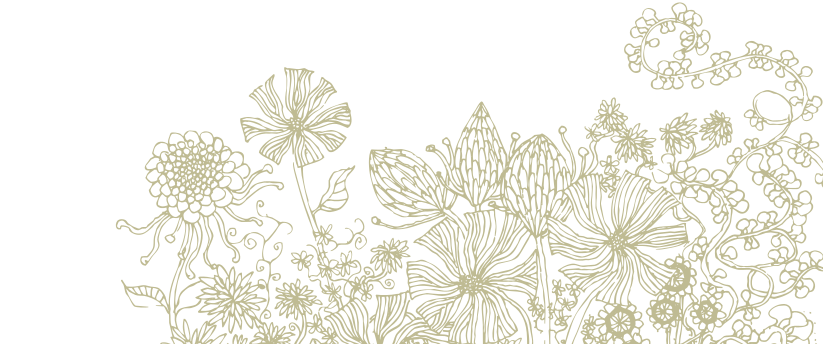
 www.atree.org www.atree.org |
Head Office
Bangalore
Royal Enclave, Sriramapura
Jakkur Post, Bangalore 560 064
Tel: +91-80-23635555,
Fax: +91-80-23530070
Regional offices
Eastern Himalayas
Khangsar House,
Above Brahmakumari, Development Area
Gangtok 737101
Tel: +91-3592-206 403
New Delhi
2nd Floor, 1, K Commercial Complex
Birbal Road, Jangpura Extension
New Delhi 110014
Tel: +91-11-2432 3133
Governing Board
Dr. Kamaljit S. Bawa (Chairman)
Dr. K. N. Ganeshaiah
Dr. R. Uma Shaanker
Mr. Darshan Shankar
Ms. Rohini Nilekani
Dr. Surinder M. Sehgal
Ms. Seema Paul
Ms. Pheroza J. Godrej
Dr. K. S. Jagadish
Mr. A. N. Singh
Dr. Ganesan Balachander(ex-officio)
Dr. Priyadarsanan Dharma Rajan
(faculty)
Executive Committee
Dr. Ganesan Balachander (Chair)
Dr. Bejoy Thomas
Dr. Siddhartha Krishnan
Dr. Siddappa Setty
Mr. Ramesh N
Dr. Priyadarsanan Dharma Rajan
Dr. Sarala Khaling (ex officio)
Mr. Sridhar R Iyengar (ex officio) |
Advisory Board
Pl note: * will also serve on the Faculty Advisory Committee
* Dr. Vijay Raghavan, Director, National Centre for Biological Sciences, Bengaluru
Dr. Raghavendra Gadagkar, INSA SN Bose Research Professor and JC Bose National Fellow, Centre for Ecological Sciences, Bengaluru
* Dr. Amita Baviskar, Associate Professor, Institute of Economic Growth, Delhi
* Dr. Navroz K. Dubash, Senior Fellow, Centre for Policy Research, New Delhi
* Dr. Gita Sen, Professor, Centre for Public Policy, Indian Institute of Management, Bengaluru
Mr. Raj Khoshoo, Senior Vice President, Siemens PLM, CA, USA
Ms. Kalpana Sharma, independent journalist, Mumbai
Dr. Ravi Chopra, Director, People’s Science Institute, Dehradun, Uttarakhand
* Dr. S. P. Singh, Former Vice Chancellor, Advisor, State Planning Commission, Government of Uttarakhand, Dehradun, Uttarakhand
Dr. Ramesh Singh, Director, Learning, Monitoring and Evaluation, Office of the Director of Programs, Open Society Institute, New York
Convenors and Programme Leaders
Dr. Jagdish Krishnaswamy,
Ecosystem Services and Human Well-being and Convenor, Suri Sehgal Centre for Biodiversity and Conservation
Dr. Sharachchandra Lele,
Forests and Governance and Convenor, Centre for Environment and Development
Dr. Priyadarsanan Dharma Rajan and Dr. Ankila Hiremath,
Ecosystems and Global Change
Dr. Shrinivas Badiger
Land Water and Livelihoods
Academy
Dr. Nitin Rai,
Convenor, Academy for Conservation Science and Sustainability Studies
This newsletter has been put together from reports by ATREE folk. Design and lay out is by Salil Sakhalkar. Editing by Samuel Thomas, Ganesan Balachander and Meetu Desai. |
|



